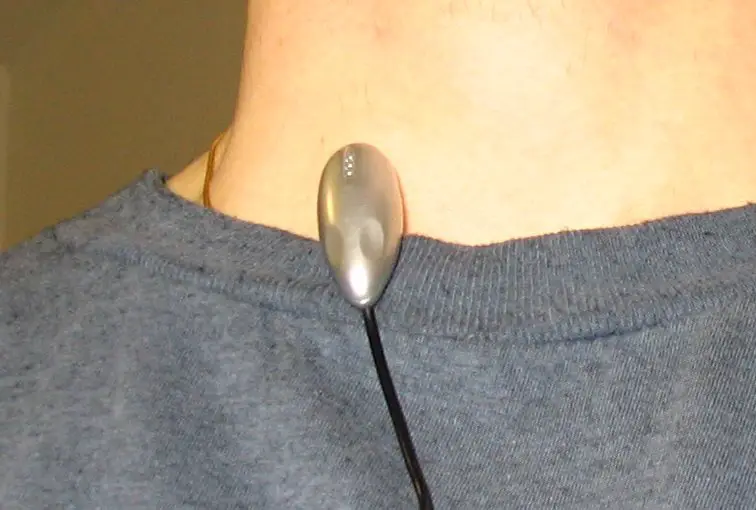Whether you’re recording audio for film and television, hosting a podcast, or putting on a stage production, lavalier microphones are the best way to ensure you get excellent quality sound. They can remove the restrictions that desk and handheld microphones tend to impose, and get you a more naturalistic feel to your audio.
The one question that comes up time and again concerning lavalier mics, though, is whether they are condenser microphones. We know that condenser microphones are the preferred choice among audio technicians that need to capture clear, concise vocals.
But how can we be sure the build of your lavalier microphone has a condenser transducer? And for that matter, why should we care whether your lavalier microphone is a condenser microphone? Why is it the microphone of choice for audio technicians, and does their general judgment hold water in all cases?

The truth is, lavalier microphones are available as either condenser and dynamic, and both have benefits that can enhance the recording quality. And while you may think that a condenser lavalier microphone is the best choice, you need to give some thought to what you’re recording before that can be proven.
Let’s take a look at both condenser and dynamic lavalier microphones, and discuss the differences between them. Doing so will help you find the correct type of microphone for your needs, and help you make a better-informed decision about whether or not you need a condenser lavalier microphone.
Table of Contents
What Is A Lavalier Microphone?
The first thing we’ll focus on is what a lavalier microphone is, and why it’s one of the best ways to get high-quality audio in a range of settings.
A lavalier microphone is incredibly small in size, which means it can clip to clothes or stationary objects, where it will remain reasonably unnoticeable. The size makes them perfect for recording in situations where the wearer needs to be handsfree, or for getting great audio on video recordings without needing large boom mics and larger setups.
What Is A Condenser Microphone?
A condenser microphone has a device known as a ‘condenser transducer’ built into it. It’s this transducer that takes acoustic sound waves and transforms them into electrical signals that a computer can understand.
One of the reasons that condenser microphones are the preferred choice for recording vocals is because they have a high sensitivity that can pick up a wide range of frequencies. That produces a much more natural sound once it’s digitally converted.
However, their sensitivity can also be a disadvantage when you’re recording your podcast. A lavalier microphone that has a condenser transducer will probably pick up background noises when it’s recording outdoors, rather than focusing solely on the vocals you want.
Condenser microphones also require additional power, either in battery form or by using phantom power (power provided by your recording device). While this helps to create that pure, clear sound, it does mean that you’ll need to keep a stash of batteries on hand at all times to avoid power failure.
What Is A Dynamic Microphone?
While a condenser microphone has a ‘condenser transducer’ for transforming soundwaves into electrical waves, a dynamic microphone has a ‘dynamic transducer’ which works to do the same job.
So what’s the difference? A dynamic microphone will still pick up a wide range of frequencies, but it isn’t as sensitive as a condenser microphone and will concentrate more on vocals directly in front of it. That means that it’s better for using in a recording with several voices, or for outdoor shoots where background noise could be an issue.
Dynamic microphones are usually more budget-friendly, too, so they’re often a better choice if you want a high-quality recording but don’t want to spend too much to achieve it.
Which Is Better In A Lav Mic ?
The choice between a condenser or a dynamic transducer in a lavalier microphone will ultimately come down to what you’re recording, as each design one is a for a specific environment.
If you’re looking for a microphone to record in quiet surroundings, like a one-on-one interview or an audiobook narration, a lavalier microphone with a condenser transducer will work best. It will give you a digital recording that sounds as close to your natural voice as possible.
For podcasts with multiple guests or co-hosts, large theatre productions, or group interviews, a lavalier microphone with a dynamic transducer would be the better option. Each person’s receiver will concentrate more on what they’re saying, and you’ll reduce the risk of picking up audio from other people in the room. It will make editing a lot easier too.
Pickup Pattern
It’s also important to look at the pickup pattern of your lavalier microphone. The pickup pattern works with either the condenser or dynamic transducer to enhance the quality of your recording.
There are several different types of pickup patterns. However, the two most commonly used in lavalier microphones are omnidirectional and cardioid.
Omnidirectional pickup works across a 360º arc and picks up sound from all directions, while simultaneously reducing background noise. This type of pickup works best with a lavalier microphone that has a condenser transducer because that allows you to record in busier environments and drown out background noise.
Cardioid pickup works across a 180º arc and concentrates the microphone on sounds that are coming from directly in front of it, blocking out background noise by design. This pickup pattern is better suited for dynamic lavalier microphones because it helps them focus on the voice of the person wearing the mic and reduces background noise.
Final Word
As you can see, not all lavalier microphones are condenser and with good reason. Too much sensitivity could adversely affect your recording, especially if you’re using a lavalier microphone to record outdoors.
Both condenser and dynamic lavalier microphones are a great way of getting extremely high-quality sound. Still, each one will have a different effect on how you produce your recording, so choose wisely!
